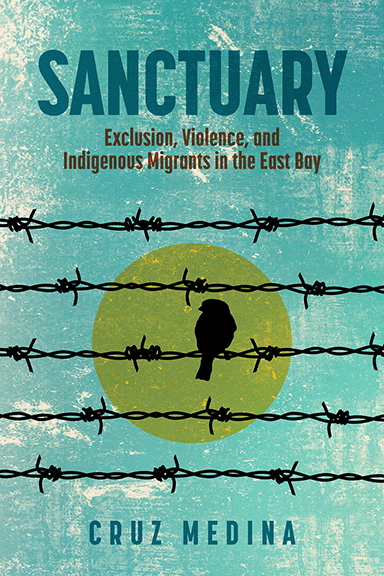Connecting to the Guatemalan Immigrant Experience, Then and Now

An Interview with Dr. Cruz Medina on his new book Sanctuary: Exclusion, Violence, and Indigenous Migrants in the East Bay
By Clara Helm ’25
In a powerful exploration of identity and immigration, Dr. Cruz Medina shines a light on the often-overlooked experiences of indigenous Mayan immigrants from Guatemala in his newly released book, Sanctuary: Exclusion, Violence, and Indigenous Migrants in the East Bay. His work emerges from a deeply personal connection and a commitment to social justice, as he navigates the complexities of language, culture, and the immigrant experience.
Dr. Medina’s journey began when he moved to Santa Clara and engaged with a local Spanish language church. After being invited by his friend, a missionary and teacher working in the East Bay, Dr. Medina collaborated on the development of an English program where volunteers would teach the members of the church and community English as another language.
Dr. Medina saw an opportunity to collaborate with the community even further, and after receiving approval from the priest of the church and going through the necessary Institutional Review Board (IRB) process for research, he started having more discussions with the adult student population about their language and immigrant experience.
The discussions opened his eyes to the unique challenges faced by many adult learners, including numerous indigenous Guatemalans who spoke Mam as their first language.
“My great-grandmother on my father's side of my family was actually Guatemalan and the ways that Indigenous Guatemalans can be ignored, or believed to be other ethnicities like Mexican, parallels my experience at the church and in my own family, where my grandmother grew up feeling ashamed about her Guatemalan heritage, which resulted in our family not talking or knowing that much about it,” he recalls, reflecting on the similarities he observed in both his family history and the lives of his students.
This shared heritage inspired him to delve deeper into the stories of these communities, aiming to illuminate their experiences and struggles.
Sanctuary tackles significant themes surrounding immigration, particularly in the context of contemporary political discourse. During the tumultuous 2016 presidential campaign, when derogatory language about immigrants became rampant, Dr. Medina sought to undercut this sensationalization of immigration and humanize those often dehumanized by political rhetoric.
“My work aims to highlight the sacrifices made by those seeking refuge from violence and poverty,” he states, emphasizing the need for empathy and understanding in immigration debates.
Dr. Medina’s research process involved direct interaction with the migrant community in Northern California. In his first chapter, he vividly recounts a moment during his survey efforts when a student challenged him, asking, “How can you help me?”
Not looking for an official response expected from an academic, the student wanted something more — a material solution to his problems.
This poignant question underscored the limitations of academic research in addressing immediate needs like housing and employment. Despite these challenges, he found that many students appreciated his presence and efforts, recognizing his commitment to understanding their stories.